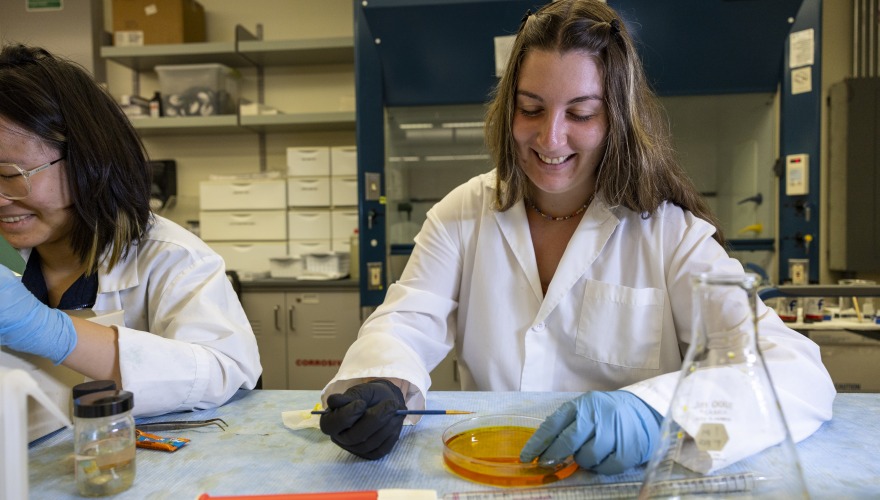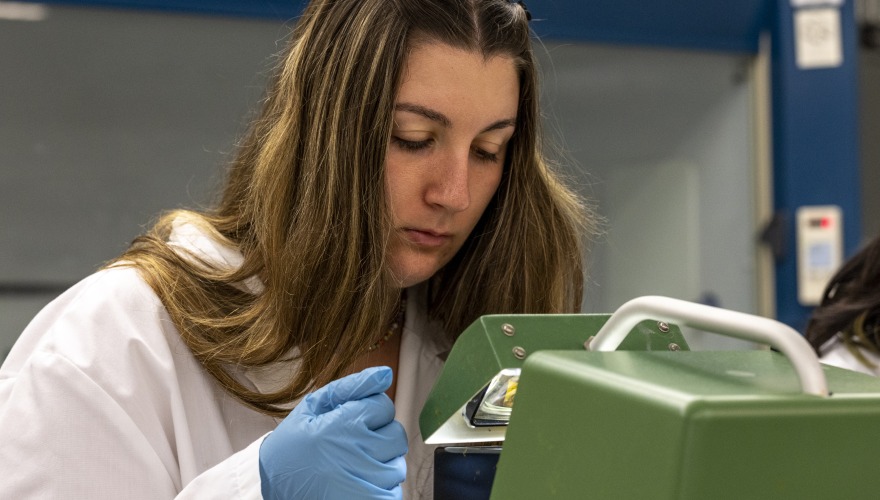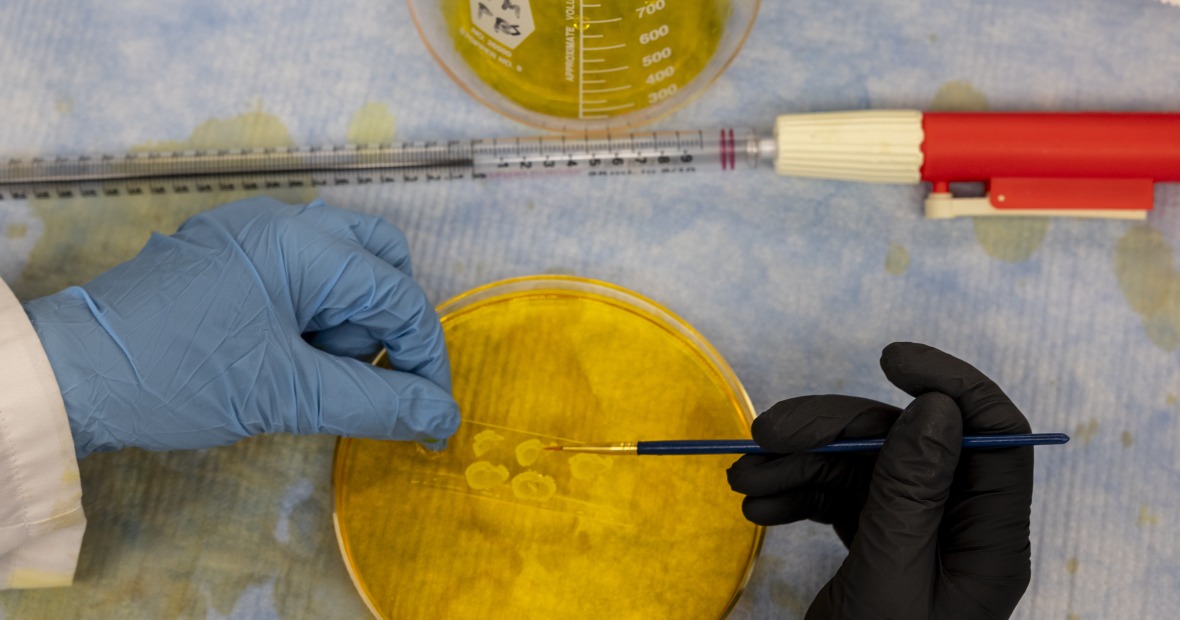The Trials and Tribulations of a Teenage Rat
Summer MAP Series: Ioanna Giannakou ’24
With any research project, there’s the potential for lots of things to go wrong. Being bitten, however? It’s a less common worry.
But when you’re working with rats, as Ioanna Giannakou ’23 did in her summer Mentored Advanced Project (MAP), it’s a possibility worth considering.
This summer, Giannakou worked with Nancy Rempel-Clower, associate professor of psychology and neuroscience, studying the effects of adolescent stress on anxiety and depression-like behaviors in rats.
Rempel-Clower’s team of four research students divided responsibility for the project, each taking the lead on the data for a specific set of characteristics — anxiety or depression behaviors in early-adolescence or mid-adolescence rats. Giannakou’s focus was the expression of depression in rats stressed during mid-adolescence. “We’re curious about the age at which animals would be affected more by stress, because there are conflicting data out there about it,” she explained at the start of the summer.

A Tricky Thing to Measure
To study the effects of adolescent stress, Giannakou had to first create a high-stress experience by immobilizing the rats for several hours. The procedure ended up being quite stressful for the researchers, too. “It’s hard to see them so upset. Plus, when the rats have been restrained for a few hours, they can be very nasty when you finally take them out,” Giannakou says. And, really, who can blame them?
Next, Giannakou and her team needed to characterize how the trauma experienced during adolescence shaped rats’ expression of depression and anxiety. There’s no easy way to diagnose a rat with depression, but, Giannakou explains, there are tests that neuroscience researchers can use to identify depression-like and anxiety-like behaviors in a rat. These behaviors can be quantified and then treated as markers of mental health.
For example, one depression test compared the preference for sugar of stressed vs. control rats. “If they prefer less sugar, it’s an indication that they are more depressed,” Giannakou explains. Other behavioral tests measured rats’ willingness to swim in water, their preference for light or shade in an open field, and their avoidance of the open ends of an elevated maze.
The behavioral tests require precision. “Planning for the tests, the room setup and all, that was a lot of work. A lot more work than I thought it would be,” Giannakou says. The tests must be set up perfectly and completed for all the rats on the same day, she explains. This way, the only variable at play is whether the rats were stressed — nothing else.
Surprisingly Resilient Creatures
Examining the data from these behavioral tests, Giannakou and her research team concluded that stress heightened anxiety in both early-adolescent and mid-adolescent animals. When it came to depression, the results were more surprising.
Rats that had undergone stress in early-adolescence showed no more depression-like behavior than the control animals. And the rats that experienced stress in mid-adolescence exhibited even less depression-like behaviors than control rats! Why? Giannakou believes this may have to do with a resilience developed by the animals after experiencing stress early in life.

Taking It to the Big Stage
Giannakou and her research partners spent the last few weeks of the summer preparing the rat brains for imaging. This fall, they’ll examine the neurons in the limbic regions of the brain, studying whether the adolescent stress caused physical changes to the amygdala and prefrontal cortex. “When we look at specific structures of the brain, we can see the neurons in great detail and see whether the physical structure justifies the behaviors we saw,” she explains.
They’ve submitted abstracts from their summer research to a poster session to be held in November during the Society for Neuroscience Meeting in Washington, D.C. “We are really excited to take our posters there and present them!” Giannakou says. “This experience has definitely built my confidence talking about research [and] talking about neuroscience and psychology in general.”
Giannakou is currently applying to graduate programs in cognitive neuroscience. She is grateful to have such a positive, full-time research experience already under her belt. “I think I now have a really good idea of what graduate students are expected to be doing and also the problem-solving aspect of research,” Giannakou says. “And I’m just really proud of us.”

